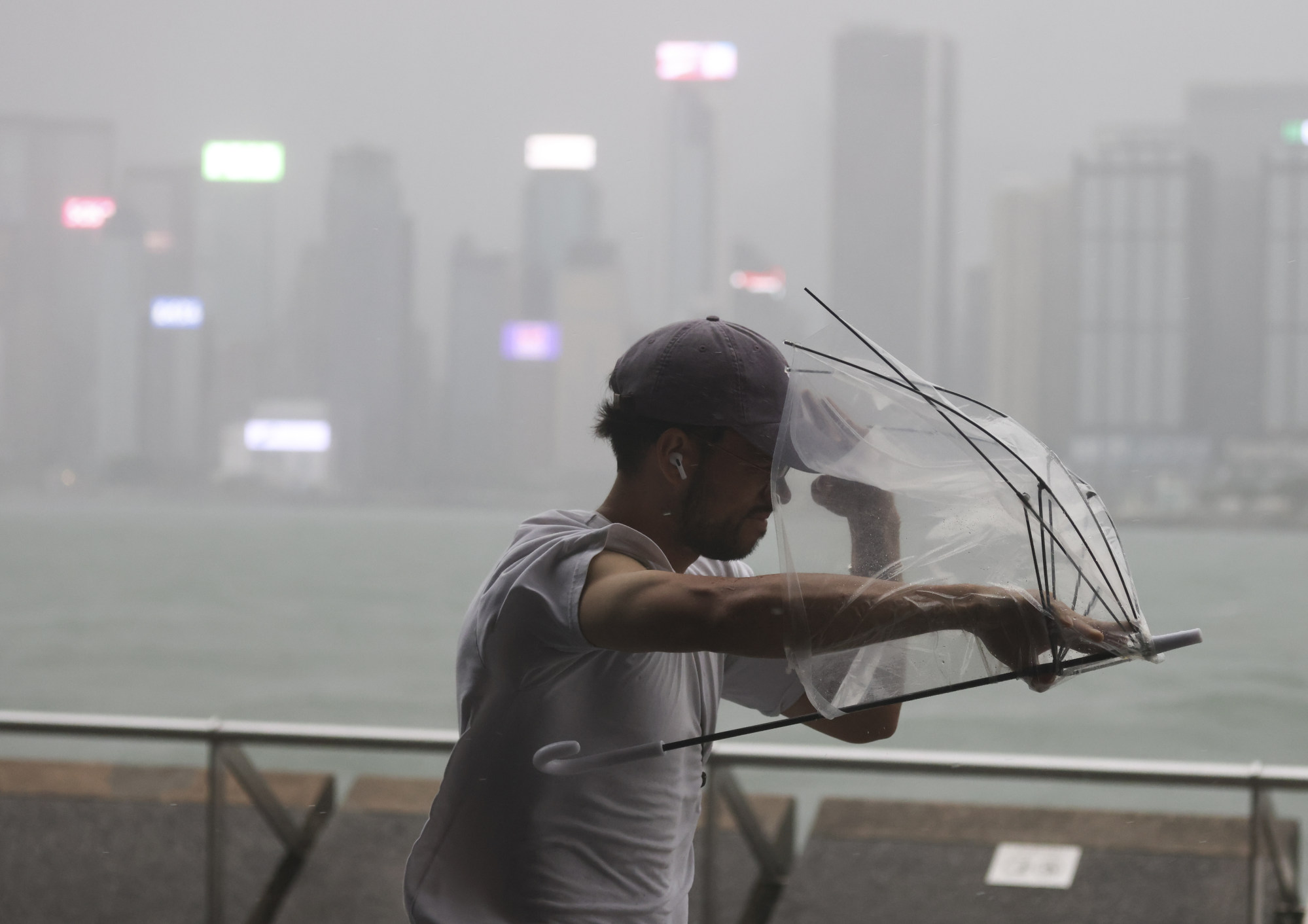[ad_1]
Super Typhoon Saola’s “double eyewall” is a feature of very strong storms and commonly seen in half of hurricanes in the United States, experts have said, as Hong Kong braces itself for what could be one of the city’s worst weather events in years.
The Hong Kong Observatory upgraded its typhoon signal to No 9 from No 8 at 6.20pm on Friday as the storm skirted within about 30km (19 miles) east of the forecaster’s main facility in Tsim Sha Tsui.
It also said Saola, which is named after a rare and protected horned mammal in Vietnam, had developed a “double-eye-walled structure” as it encroached upon the city.
Hong Kong coastal residents in nervous wait over flooding from Super Typhoon Saola
Hong Kong coastal residents in nervous wait over flooding from Super Typhoon Saola
The Observatory explained that the phrase “eyewall” referred to the thick circular ring of clouds surrounding the centre of tropical cyclones, where winds are at their fiercest.
“Double-eye-walled structure refers to the appearance of two concentric eyewalls,” former Observatory director Lam Chiu-ying said. “It is an indicator of an intense typhoon.”
He noted the feature was a consequence, rather than a cause, of a strong storm.
Hong Kong Meteorological Society spokesman Leung Wing-mo said strong storms often developed the feature during a process called “eyewall replacement”.
“Because of complex actions inside the typhoon, such as rapidly rising and subsiding air, convergence of air near the ocean’s surface, and air-sea interactions, etc, another eyewall forms outside the old one,” he said.
Leung, who is also a former assistant director at the Observatory, said the typhoon’s overall strength could temporarily diminish as the two eyewalls interacted, before they gradually merged into a new one.

“During the process, the typhoon may weaken a little bit. If the old eyewall weakens, then the wind speeds will be lower,” he said. “But as the new one forms, the strength can rise again.”
“Before midnight tonight, we may see one single eyewall again, but it is very hard to predict. We are watching the structure of the storm fluctuate before our eyes.”
While the process could take anywhere between a few hours to two days, Leung stressed that Saola would remain a super typhoon and posed a “worrying threat” to the city, regardless of how long it maintained its double eyewall.
The Post looks back at Hong Kong’s deadliest typhoons as storm Saola draws near
The Post looks back at Hong Kong’s deadliest typhoons as storm Saola draws near
Double-eye-walled structures are not uncommon among large storms, with the Observatory noting 50 per cent of hurricanes that had struck the United States had such a feature.
Super Typhoon Doksuri, which largely bypassed Hong Kong but left dozens dead across mainland China and the Philippines, had developed a double-eye-walled structure, it added.
Other typhoons that had developed a double-eye-walled structure included Muifa, which emerged in 2022 and became the strongest tropical cyclone to ever hit Shanghai, and Dujuan, which caused landslides in Hong Kong in 2003.
Travellers hoping to fly from Hong Kong left stranded as storm Saola draws closer
Travellers hoping to fly from Hong Kong left stranded as storm Saola draws closer
Hong Kong’s Security Bureau shared footage of Saola taken by the Government Flying Services that provided some of the clearest images so far of the storm’s “tight wind formation” and “clearly visible eye”.
The data would be sent in “real-time” to the Observatory for analysis to ensure that the “most accurate weather information” was readily available, the bureau said.
The super typhoon prompted schools and kindergartens to suspend all classes on Friday, while public transport services were significantly scaled back. The city’s stock exchange also closed for the day and about 460 flights were cancelled.
[ad_2]
Source link

